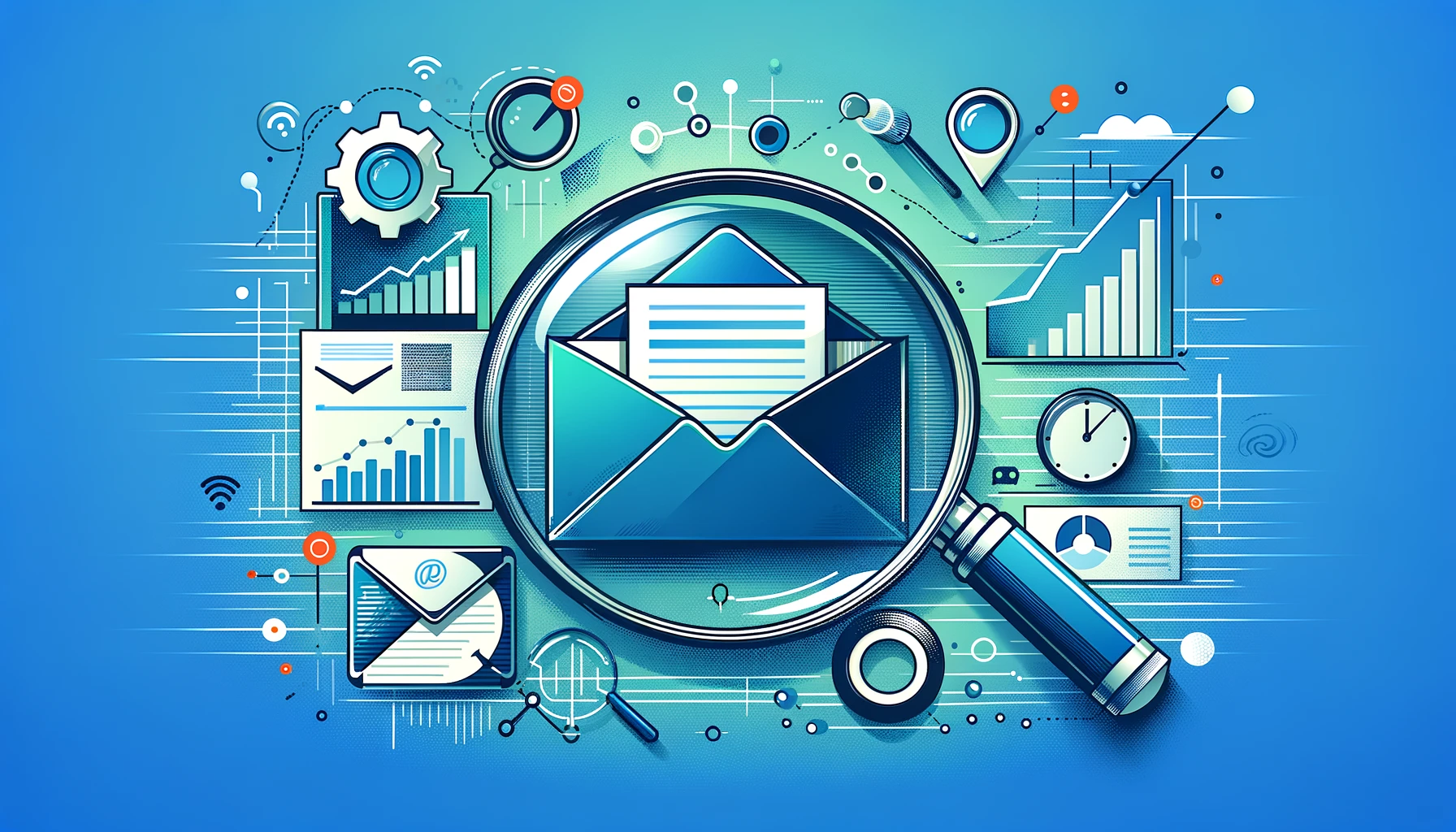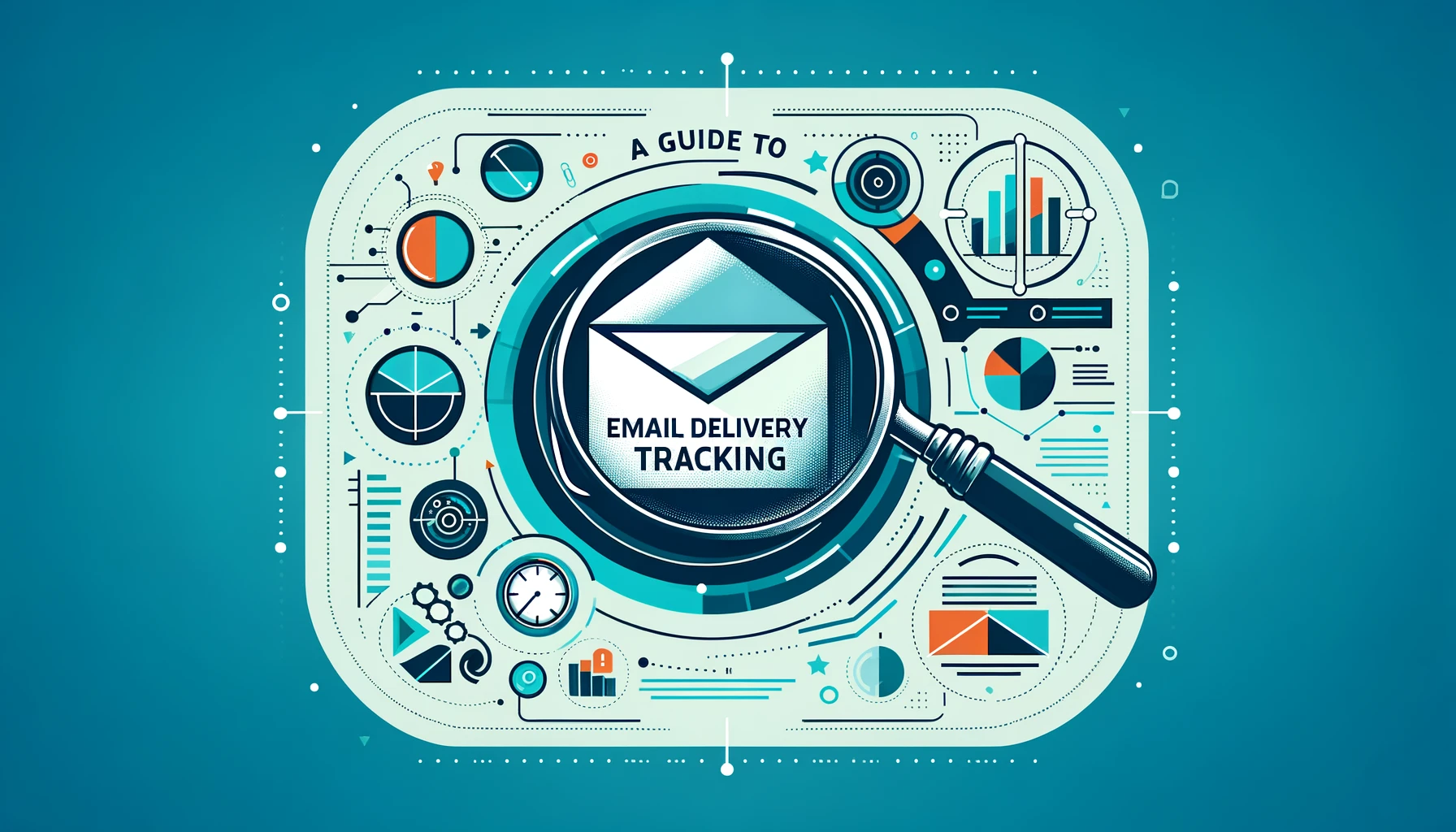A Guide to Email Delivery Tracking
Email Tracking: What It Is and How It Works
Email tracking is a technique used to monitor the delivery and engagement of sent email messages. When you send an email with tracking enabled, the tracker embedded in the email allows you to see if and when the recipient opens it. This is typically done by inserting a small, invisible image in the email, which sends a notification back to the sender when loaded by the recipient's email client. Email tracking provides valuable insights into recipient behavior, helping to gauge the effectiveness of communication and tailor follow-up strategies in email campaigns or individual correspondence.
Understanding Email Tracking and Its Importance
Understanding email tracking is crucial in today’s digital communication landscape, especially in email marketing. Email tracking involves monitoring sent emails to see when they are opened by the recipient, as well as tracking click-throughs on any links within the email message. This insight is important as it helps senders understand the engagement level of their recipients, allowing them to adjust their email strategy accordingly. It’s especially useful in gauging the effectiveness of email campaigns, providing data that can help refine messaging, timing, and targeting for future communications, ultimately improving the overall email delivery and open rates.
How to Track Email Delivery Status
To track email delivery status, users typically employ email tracking tools or services that use various methods to monitor the journey of an email from sender to recipient's inbox. These tools can provide notifications when the email is opened or if a link within the email is clicked. Trackers are often embedded as tiny, invisible images within the email, which trigger a notification when loaded. This method allows senders to confirm not only if the email was delivered but also if and when it was opened, offering valuable insights for optimizing email campaigns and individual communications.
Real-Time Email Tracking: Benefits and Limitations
Real-time email tracking offers several benefits, including the ability to know immediately when a recipient opens an email or clicks a link within it. This instant feedback can be invaluable for sales, customer service, or email marketing, as it allows for timely follow-ups or adjustments to strategies. However, there are limitations. Some email clients block images by default, which can prevent the tracking tool from working. Additionally, real-time tracking can sometimes be perceived as intrusive by recipients. It's important to balance the benefits of immediate insights with the privacy expectations of email recipients.
Email Tracking Tools: A Comprehensive Overview
Email tracking tools vary in features and capabilities, but most offer core functions like tracking email opens, link clicks, and providing real-time notifications. Many tools integrate seamlessly with popular email clients and platforms, offering a user-friendly interface for monitoring email interactions. Advanced trackers can offer detailed analytics, such as the number of times an email is opened or the location of the recipient. These tools are invaluable in email marketing for understanding audience engagement and improving email campaign strategies. When choosing an email tracker, consider factors like compatibility, analytics depth, and ease of use.
Free Email Tracking: Is It Reliable?
Free email tracking can be a great tool for individuals or small businesses looking to gain insights into their email interactions without a significant investment. However, the reliability of free email tracking services can vary. Some free tools provide basic tracking functionalities like open notifications and click tracking, but may lack advanced features or analytics available in paid versions. Additionally, free trackers might have limitations on the number of emails tracked or the depth of data provided. It's important to research and test free email tracking options to determine if they meet your specific needs and expectations.

Improving Email Delivery: Tips and Best Practices
To improve email delivery, ensure that every email sent adheres to best practices for deliverability. This includes using a clean, authenticated email list, avoiding spam trigger words, and ensuring your content is relevant and engaging. Regularly clean your email list to remove inactive subscribers, which can negatively impact delivery status. Utilizing email tracking tools can provide valuable insight into your email campaigns, helping you understand if your email was delivered and opened. Additionally, consider segmenting your list to send more targeted content, as personalized emails often see higher engagement and better delivery rates.
Maximizing Email Delivery Rate with Effective Strategies
Maximizing your email delivery rate involves understanding and improving several key aspects of your email management. Firstly, authenticate your email domain to establish trust with email servers. This prevents your emails from being marked as spam. Utilize a CRM system or email tracking software to gain insights into the number of emails successfully delivered. This data can help refine your strategy, ensuring higher deliverability. Additionally, maintain a healthy email list by removing unresponsive subscribers and avoid using aggressive sales language, which can trigger spam filters. Implementing these strategies can significantly enhance the overall success of your email campaigns.
Enhancing Email Open Rates Using Tracking Data
Enhancing email open rates can be achieved by using email tracking data to inform your strategy. Email tracking software provides crucial data on when and how often your email has been opened, which can guide the timing and frequency of your follow-up emails. This data also offers insights into subscriber behavior, allowing you to tailor your content to match their preferences. Analyzing open rates from different email campaigns can help you identify what content resonates most with your audience, leading to better engagement and improved open rates in future campaigns.
Utilizing Email Tracking in Marketing Campaigns
Utilizing email tracking in marketing campaigns can significantly boost their effectiveness. By tracking every email sent, you can receive real-time alerts when a subscriber opens your email. This data enables you to send timely follow-up messages or offers, enhancing the customer's engagement with your campaign. Tools like Mailtrack offer unlimited email tracking for Gmail, providing detailed information about message delivery and open rates. Integrating these tools with your CRM or mail merge systems can also streamline your email campaigns, allowing for better personalization and tracking on a larger scale.
Optimizing Email Delivery for Gmail and Outlook
Optimizing email delivery for popular email clients like Gmail and Outlook requires a strategic approach. Since these platforms have robust spam filters, it's important to ensure your emails are compliant with their standards. Use email tracking tools that work with Gmail and Outlook to get insights into how your emails are performing. Avoid using excessive links or images that might flag your email as spam. It’s also beneficial to encourage your subscribers to add your email address to their contact list, improving the chances that your emails land in the inbox. Regularly test different email formats and monitor how they perform in these email clients to continually refine your approach.
Email Delivery Notification: Importance and Implementation
Email delivery notification is crucial in understanding the effectiveness of your email campaigns. Implementing delivery notifications, such as read receipts or pixel tracking, can confirm that your email was delivered and opened. This information is vital for marketers and sales teams to time their follow-ups appropriately. Many free email tracking tools offer these features, providing alerts when an email is opened. Integrating these notifications into your email strategy can provide valuable insights, helping you understand the best time to send the email and how to tailor your content for maximum engagement. This can lead to improved response rates and overall campaign success.

Managing Email Campaigns with Tracking Tools
Managing email campaigns effectively requires leveraging tracking tools to monitor delivery rate, opens, and clicks. Email tracking tools like MailTracker offer valuable insights into how recipients interact with your emails, allowing you to refine and improve your email communication strategy. With features like unlimited tracking and click tracking, these tools provide data on whether your email reached the recipient’s inbox, how many times it was opened, and whether any links were clicked. This information is essential for evaluating the effectiveness of your campaigns and making data-driven decisions to enhance future communication, especially for newsletters and group emails.
Using Email Tracking for Follow-Up and Customer Relationship Management
Email tracking is a powerful tool for follow-up and customer relationship management. By using free and unlimited email tracking tools, businesses can get notified in real-time when someone opens their email or clicks on a link. This information can be used to time follow-ups perfectly, improving the chances of engagement. Integrating email tracking with CRM systems can further streamline this process, enabling businesses to maintain detailed records of customer interactions and automate parts of the follow-up process. For ecommerce businesses, tracking links and attachments in emails can provide insights into customer interests, helping to tailor future communications for better results.
Integrating Email Tracking with CRM Systems
Integrating email tracking with CRM systems enhances the management of customer interactions and sales processes. Tools like HubSpot Sales and Hunter.io offer extensions for Gmail and Office 365 that allow unlimited email tracking and link tracking. When integrated with a CRM, these tools provide a comprehensive view of customer interactions. You can see when and how often a recipient opens an email or clicks on a link, which can inform follow-up strategies. This seamless integration helps businesses streamline their workflow, ensuring that all customer interactions are recorded and utilized effectively for sales and marketing efforts.
Measuring Email Performance: Metrics and Analytics
Measuring email performance is crucial in understanding the success of your email campaigns. Metrics such as delivery rate, open rate, click-through rate, and bounce rate are essential indicators of how your emails are performing. Email tracking tools can provide detailed analytics on these metrics, offering insights into how recipients are engaging with your emails. By analyzing this data, you can identify trends and areas for improvement, helping to refine your strategy and improve your email effectiveness. Tools that offer unlimited emails tracking and the ability to export data to CSV files are particularly useful for in-depth analysis and reporting.
Automating Email Alerts for Delivery and Opens
Automating email alerts for delivery and opens can significantly enhance the efficiency of managing email campaigns. Tools with features like real-time notifications when emails are delivered or opened remove the guesswork from email communication. This automation is particularly beneficial for businesses that send large volumes of emails, such as newsletters or ecommerce promotions. Automated alerts can inform timely follow-ups, ensuring that you’re connecting with recipients at the most opportune moments. Selecting a tool that offers these automated alerts, preferably with a privacy policy that respects recipient data, is essential for modern, effective email management.
Effectively Tracking Sent Emails for Business Communication
Effectively tracking sent emails is essential for efficient business communication. Tools that provide free and unlimited email tracking, like those with a Google Chrome extension, enable businesses to monitor sent emails without the constraints of a paid plan. These tools confirm when your mail server has accepted the message and notify you when the message has been opened by the recipient. This kind of tracking is invaluable for businesses, as it provides transparency and certainty in communication, ensuring that important messages reach their intended recipients. Additionally, tracking tools can provide insights into the best times to send emails and how to structure them for maximum impact.
Inagiffy: Your Ultimate Newsletter Marketing Partner
In today's crowded digital landscape, building genuine, lasting connections with your audience is more crucial than ever.
Enter Inagiffy – a premier newsletter marketing agency that understands the transformative power of well-crafted newsletters. We're not just about sending out emails; we're about curating stories, insights, and value that resonate deeply with your audience.
Our end-to-end solutions ensure that from ideation to delivery, every newsletter reflects your brand's essence and speaks directly to your audience's needs and aspirations. Let Inagiffy empower your brand, forging authentic relationships and driving engagement through the potent medium of newsletters.
Dive into the future of meaningful communication with us and watch your audience grow, engage, and thrive.